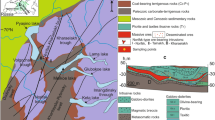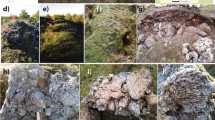Abstract
SIR E. RAY LANKESTER';S difficulties as to the origin of flint (NATURE, vol. xcix., p. 283) would be largely removed if it were more generally recognised that the vast majority of flints in all formations, excluding he occasional examples deposited along fjssures, are chemical replacements of the limestones in which they occur. Microscopic observation of thin sections has, of course, furnished the most powerful confirmation of this view. The difficulties as to the cause of such replacement are similar in the case of all “concretions” where the original rock-substance has been removed and new material has been substituted. We now know that even iron pyrites may thus replace silicates or quartz, and that massive crystalline ores need not represent the infilling of cavities.
This is a preview of subscription content, access via your institution
Access options
Subscribe to this journal
Receive 51 print issues and online access
$199.00 per year
only $3.90 per issue
Buy this article
- Purchase on SpringerLink
- Instant access to full article PDF
Prices may be subject to local taxes which are calculated during checkout
Similar content being viewed by others
Rights and permissions
About this article
Cite this article
COLE, G. The Origin of Flint . Nature 99, 324 (1917). https://doi.org/10.1038/099324b0
Issue date:
DOI: https://doi.org/10.1038/099324b0



